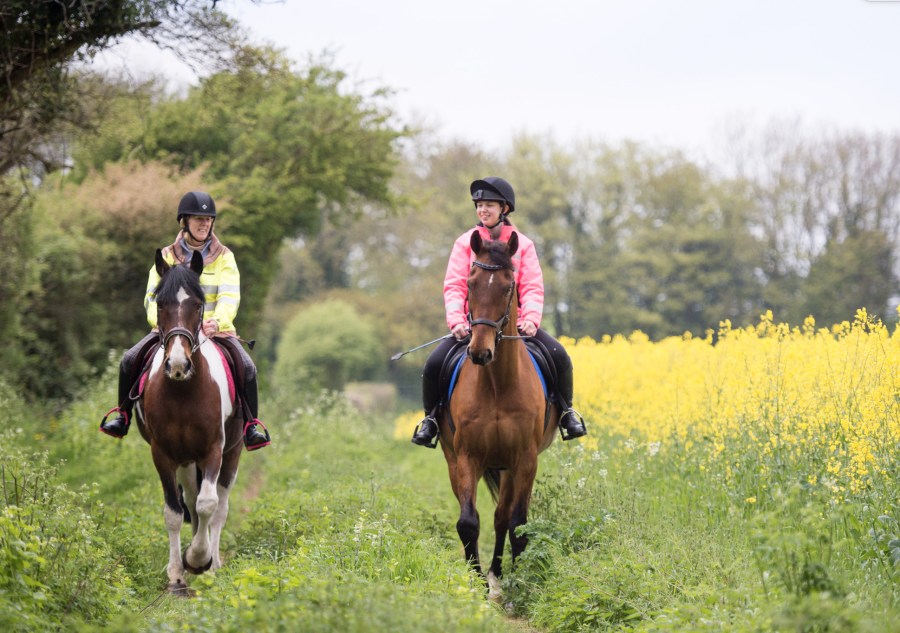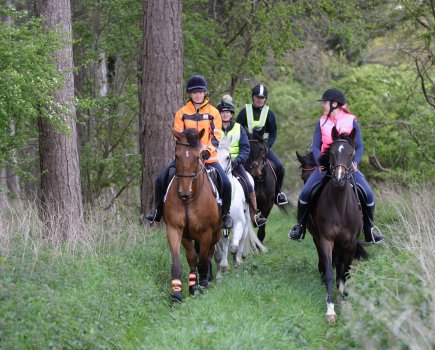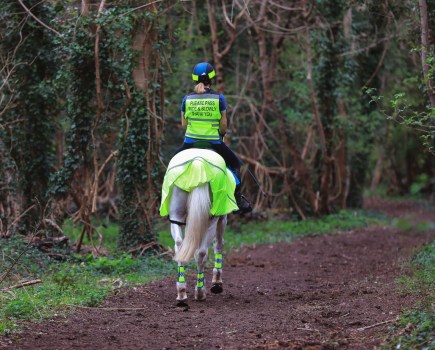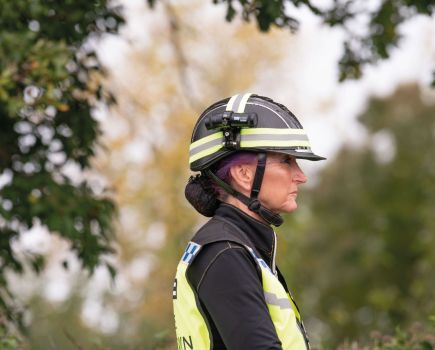In partnership with Wintec Saddles
How often do you stop to consider the different terrain you encounter while hacking a horse? From roadwork and grassy bridleways, to gravel tracks or boggy moorland, depending on where you live, you could be encountering all manner of — or very few — different landscapes.
According to BHS senior coach and endurance rider Cindy Russell, this variation can really impact your horse’s fitness and proprioception.
“The basic things we think of when considering terrain is whether it’s flat or there are hills, but there’s more to it than that,” says Cindy. “You need to consider the combination of what the gradient is and what the surface is like.”
Variation in terrain
Surfaces found out hacking include roads, tracks, grass and soil. Even soil can be broken down into either a sand- or clay-based surface, and whether this surface is smooth, stony or rocky.
“It’s sort of similar to different arena surfaces in the impact it can have on your horse,” says Cindy.
“A flat, level yet hard surface arena will pull less but have more concussion on a horse’s legs, whilst a deep sand or rubber surface will put less concussive forces on the limbs but pull more.”
So what should you be considering when it comes to surface? For many riders who hack locally, it won’t have much of an impact. But if you move yards, purchase a new horse from outside your area, or fancy venturing further afield for fun rides or events, it is worth revisiting your training plan.
“If you’re doing pleasure rides and not travelling far then your horse will be used to the local terrain. However, if you’re going somewhere further away then you need to consider this when training your horse,” advises Cindy.
“You need to assess the terrain and work out how to cover it in the most economical way.”
Incorporating different surfaces
“Fitness is key. If you went to the gym and only did legs, your upper body wouldn’t be strong. Take the same approach for training your horse. If you only work on one surface, they won’t be able to cope with other ones,” cautions Cindy.
She believes in training horses holistically. This means that instead of only focusing on the thing you want to improve, take a ‘whole horse’ approach. When you do this, variety is the key to success.
“I re-schooled a polo pony who’d spent her whole life playing on nicely manicured surfaces. Because that was what she was used to, when she was anywhere else she would trip a lot,” recalls Cindy.
“Her proprioception wasn’t very good, because it never really needed to be. She had to re-learn how her body moved.”
Improving proprioception
Proprioception is our body’s sense of awareness. It is the ability to know we are moving our feet and where we are putting them, for example, without looking at them. The same applies in our horses too.
When retraining her pony, Cindy included lots of pole work to teach the mare to lower her head and look where she’s going.
Horses see best with the lower half of the eye — which is why they tend to drop their head and look down at a ditch, for example — so altering the level of their head is important.
Pole work also teaches a horse to lift their abdominals and back muscles to get over the poles, improving strength and fitness.
In addition to pole work, Cindy also spent time teaching the mare to adjust to the feel of different surfaces under her feet.
This included tarpaulin, stones, and a homemade bottle pond, which involved wading through old milk cartons.
“Doing this made the mare use her brain. She really had to think about what she was doing,” explains Cindy.
“A good hacking or endurance horse uses their brain as well as their body. They have to be confident with allowing you to take them to unfamiliar places, but feel that the ground is familiar beneath them.”
Riding downhill
Many riders use hill work to improve their horse’s fitness. However, many people only consider the effort involved in going up the hill, and not for coming down.
“Going downhill is just as hard as going uphill. Lots of riders will do faster work going up and walk back down, but horses use different muscles to do each,” explains Cindy.
“Think about it: when we walk uphill, we feel a stretch in the hamstrings and glutes, and possibly in the shoulders if we use our arms.
“When we go downhill, we feel it in our quads and front of our shins, as these prevent us gathering too much momentum [and going down too fast.”
Off the forehand
So while you might assume a horse can ‘rest’ on a loose rein when they are walking back down a hill, the risk is that it results in them falling onto the forehand.
“You still want them to feel light in front and not like they are running into the ground,” warns Cindy.
“Here is where schooling comes in. They need to have their backend working so they don’t overload the front end.”
Schooling doesn’t mean endless circles in the arena. Cindy recommends factoring it in to your hack: half halts, transitions, bending, and lateral work.
When you are in the arena, practise spirals and serpentines, or exercises where you weave through cones.
“Use your seat and leg to support them and create the energy to get the horse to lift in front and engage their hindquarters,” she adds.
This content is brought to you in partnership with Wintec Saddles, durable, comfortable, easy-care, weather-proof saddles for everyone, and proud supporter of #Hack1000Miles.
Main image by Your Horse Library/Kelsey Media Ltd








